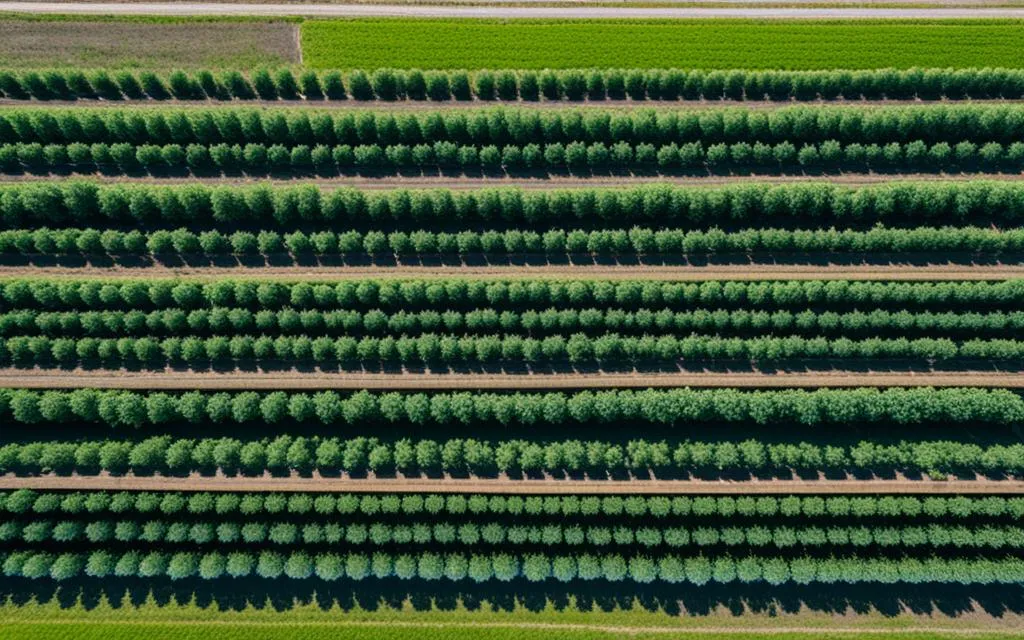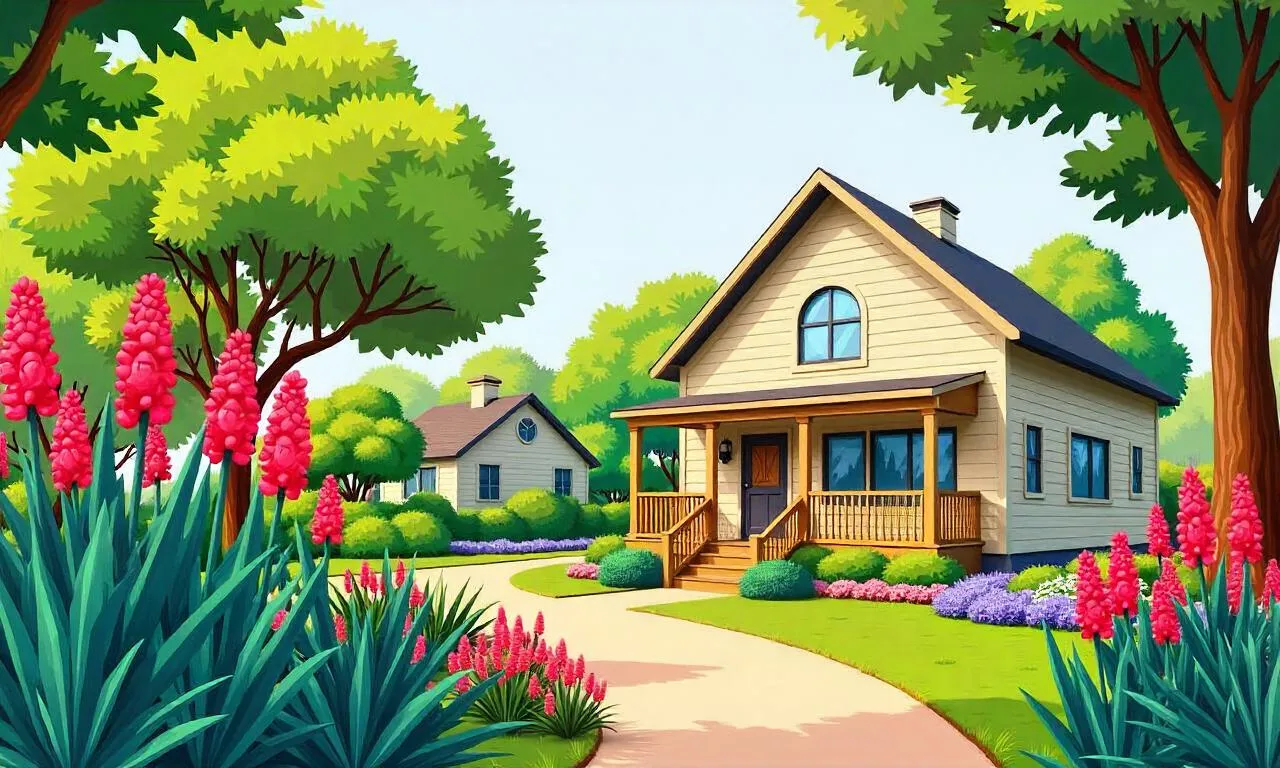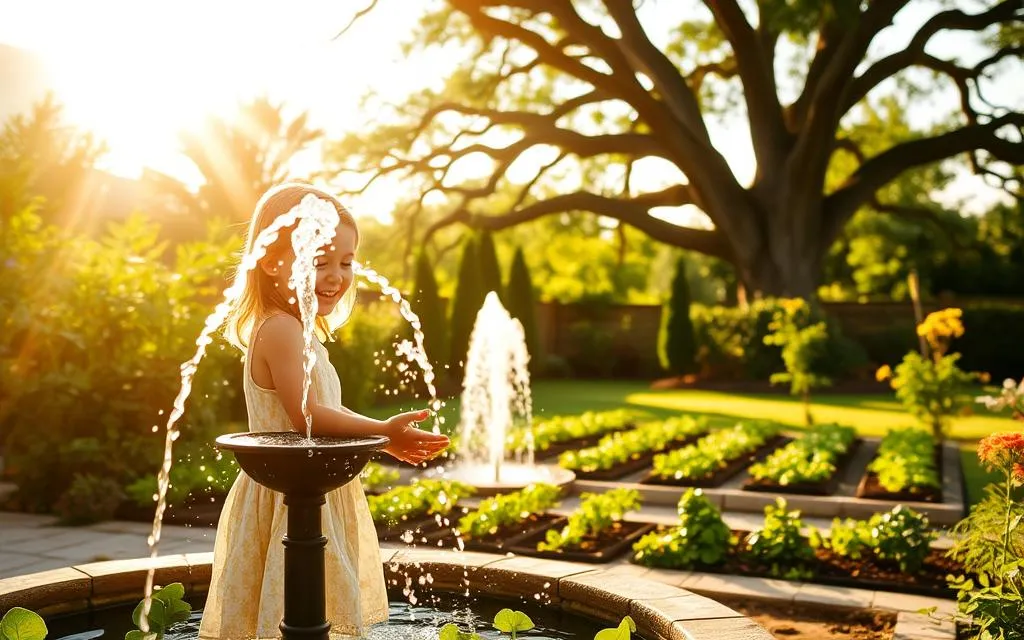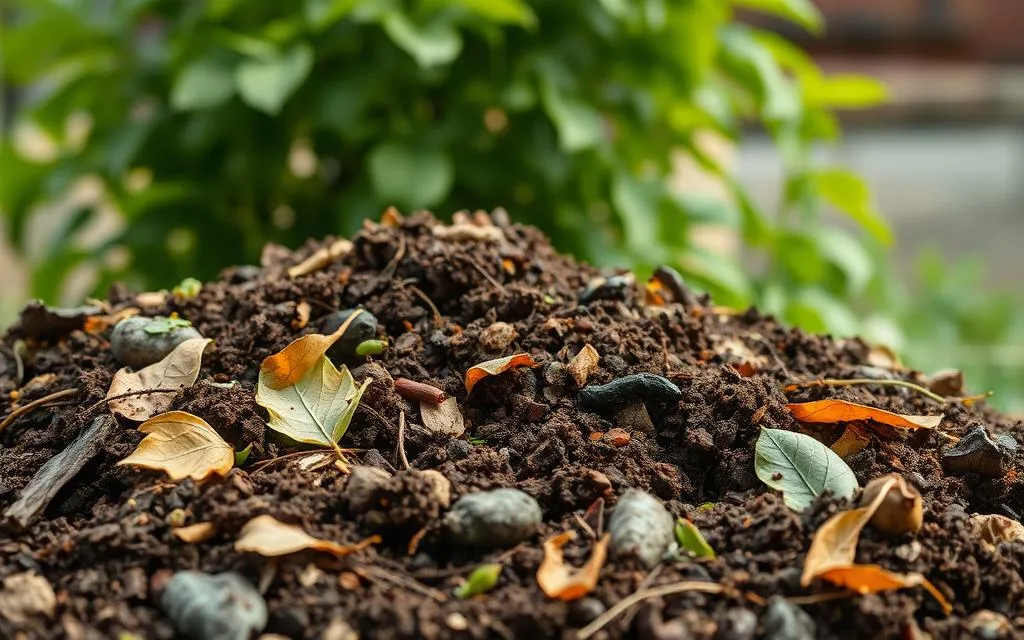How Far Apart to Plant Apple Trees – Choosing the right spacing for apple tree planting is key. It ensures they grow well and produce a lot of fruit. The space between apple trees changes based on the tree’s full size and your area’s weather. Knowing how far to plant them helps our orchards be successful and fruitful every year.
For large apple trees, they should be 15 to 18 feet apart1. This spacing lets each tree grow big without getting in the way of others. As a result, they won’t fight for sunlight and nutrients. On the flip side, dwarf apple trees can be placed closer, about 6 to 8 feet apart1. These smaller trees still give plenty of fruit but take up less space.
Climate is also important for apple tree spacing1. Dwarf trees often fruit earlier than the big ones1. This makes them great for small gardens or orchards. It’s a way to get fruit faster in the right conditions.
Table of Contents
ToggleIntroduction to Planting Apple Trees
Planting apple trees brings joy to many, from home gardeners to those tending large orchards. Ensuring they are spaced correctly is key for their health and fruitfulness. This includes the right distance between trees for proper light, air, and root spread2.
Why Proper Spacing Matters
The right space between apple trees is vital. It ensures they get enough light to grow and bear fruit. Apple trees love full sun, needing 6-8 hours of direct light each day2. It also improves air flow, reducing the chances of diseases and pests. Good circulation keeps the trees strong and healthy2.
Factors Affecting Tree Spacing
The spacing needed for apple trees depends on the variety, climate, and your own plans. Dwarf trees can stand closer together, about 8-10 feet, while larger trees need more room, up to 18-20 feet2. Soil conditions and the water they get also matter. Good drainage is a must for healthy roots. If your soil is poor, consider raised beds or containers2.
When putting in an apple orchard, think about room for growth. Keeping space open for new trees won’t hurt the ones you already have. This way, you can keep expanding while letting your trees flourish2.
Knowing why apple tree spacing is crucial and how to do it right ensures your orchard’s success. Good planning ensures your trees grow well, bear plenty of fruit, and stay healthy2.
Dwarf Apple Tree Spacing
Planting dwarf apple trees? Space them right. They should be 6 to 8 feet apart. This way, more trees can fit in your garden. They still get enough space to grow well3.
This spacing lets each tree get plenty of sunlight and fresh air. Their roots also have space to grow. It’s all they need to be healthy and fruitful.
Apple trees are often grafted onto special roots. These roots make the tree stay small. That means you can plant a few in a small area3.
Some types of roots, like M.26, make trees that are 8-10 feet tall. They start making fruit very soon. But they might fall over or get sick easily3.
Others, like MM.111, are not as short, getting about 80% as tall as regular trees. M.9 is even taller, at about 40-50% of a standard tree’s height. It starts making fruit early on3.
So, keep in mind dwarf apple trees give fruit after 2 to 3 years. This is much quicker than regular trees, which may need up to 8 years. That’s a big reason they’re great for small gardens and farms3.
Ideal Spacing for Dwarf Trees
For dwarf apple trees, the best space is still 6 to 8 feet apart3. This helps them get all the sun and air they need. It also lets their roots grow well for strong support3.
You should also give them plenty of space around each tree. Use as much room as they will grow tall. This stops them from blocking each other’s light and helps fruit grow well3.
Follow these tips for a great dwarf apple orchard. Even in small areas, these trees can do well3. Their small size makes them perfect for your garden, a small farm, or even in the city124.
Semi-Dwarf Apple Tree Spacing
Planting semi-dwarf apple trees needs about 15 feet between them5. This is more than dwarf trees need. You give the semi-dwarf types space to let their roots and canopy grow. They won’t fight for resources this way5. A 15-foot gap lets you use the orchard space well. It also gives the trees the space they need to produce good fruit5.
Semi-dwarf apple trees like G.202 and more need 18 feet between their rows5. This setup makes orchard care like pruning and harvesting easier2. They grow to be about 10 to 14 feet tall. This makes them easier to take care of than full-size trees5.
Think about sunlight, soil, and pollination when setting up your orchard2. By spacing trees like you should, and considering these needs, your orchard will thrive. It will give you lots of fruit for years2.
If you’re growing pears or tart cherries, spacing matters too5. Semi-standard pear trees need a 12-foot space. And dwarf tart cherries grow best with a 12-foot gap5. Knowing how to space these trees will help your orchard do well126.
Standard-Size Apple Tree Spacing
For large apple trees, space them about 25 feet apart7. These trees are big and need space for their leaves and roots7. In warm places with long growing seasons, give them 30 feet instead. This helps the trees get what they need and stops them from being too close7.
Accommodating Large Trees
Large apple trees can be about 30 feet tall and wide7. Giving them the right space helps them grow well and stay healthy7. It also makes taking care of them, like cutting off branches or keeping bugs away, easier. Your orchard will be more fruitful and easy to manage this way1.
Additional Space for Warm Climates
In places that stay warm longer, like Zones 6-9, add 5 more feet between apple trees7. This lets the trees spread out and grow deep roots, finding more food and water7. Giving them this extra space stops them from being so crowded. It gives them a better chance to make top-notch fruit175.
High-Density Planting Methods
For those with small spaces, using high-density planting can help get more apples. This method lets you have more trees in a small area. It means a bigger harvest from your orchard8.
Cordon Espalier Spacing
The cordon espalier system is one way to plant more in less space. It involves training trees to grow upright and close together. They’re only 18-24 inches apart. With this method, you can have up to 9,000 trees in an acre. That’s a lot of apples in a small space, making your orchard very productive8.
Horizontal Espalier Spacing
Another choice is horizontal espalier. Here, trees are guided to grow flat against a support like a trellis. They’re spaced 4-5 feet apart9. This approach uses careful support and pruning to keep trees small. It means you can plant a lot more in a smaller area10.
To make these methods work, you need good planning and regular care. Choosing the right spot, prepping the soil, and training the trees properly are key steps. Also, keeping up with pruning is essential. But with the right steps, you can have a very fruitful orchard, even if it’s small8.
Fruit Tree Hedge Spacing
Creating a fruit tree hedge is a smart choice for high-density planting, especially with citrus trees. You can plant them just 3 feet apart, making a thick, green wall11. Just remember, you’ll need to prune them often to keep their shape.
When setting up a fruit tree hedge, think about how big the trees will get. You can plant trees with dwarf rootstocks just 2 feet apart11. For super-dwarf rootstocks, you can go as close as 1 foot11. The right spacing keeps the hedge neat and eye-catching.
Don’t forget about pollination partners for your fruit tree hedge. They should be no more than 100 feet apart for the best fruit11. This makes sure the trees pollinate each other well.
Choosing the right fruit tree varieties is key when making a hedge. Pick dwarf or semi-dwarf types that suit your space and climate. With good planning, you can have a fruitful, lovely hedge that brings life to your yard12.
In certain environments, like cool, wet, or shady areas, fruit trees need more room. They require extra space for light and air. To find the best spacing, you have to consider your local conditions and the trees’ future sizes13.
Follow these tips for a great fruit tree hedge. With the right space and choice of trees, your landscape will look beautiful and be easy to care for111213.
Single-Hole Planting Technique
The single-hole planting technique is great for those who love apple trees but have limited space. It lets you plant two to four apple trees in the same spot. This way, you can grow different types of apples close together without needing to graft them together14.
Putting many apple trees in one hole makes them share resources. This makes them grow into semi-dwarf trees that are easier to take care of. The Backyard Orchard Culture method helps you have apples from spring to fall by combining early and late fruiting types. This method is perfect for small spaces, making it easy for anyone to grow their own fruit trees at home14.
Benefits of Multi-Variety Planting
This method doesn’t just save space. It also means you can have many different kinds of apples in your garden. I’ve tried planting three or two apple trees together, and it works great14. With this, you get apples of all kinds throughout the year.
In addition, I found that Pink Lady apple trees from seeds do better than grafted ones. This adds even more fun to the whole planting process14. So, by trying different apple types and planting ways, you can grow a beautiful orchard. It will truly be your own, full of your favorite apples14.
how far apart to plant apple trees
Row Spacing Guidelines
When planting apple trees in a row, follow this tip. Space them out by how tall the biggest trees will grow. Add 3 to 5 feet for people to walk between the rows1. For trees that will grow 10 to 15 feet high, plant them 10 to 15 feet from each other. Make sure there’s enough room for people to walk between the rows, like 15-20 feet wide spaces1.
- Full-size apple trees should be planted 15 to 18 feet apart in a row1.
- Dwarf apple tree varieties can be planted 6 to 8 feet apart in a row1.
- Apple trees usually take a few years, 2, 4, or more, to start bearing fruits. But this can change based on the type and size of the tree when it was first planted1.
- Below are some favorite apple kinds and the places they best grow:
- Honeycrisp (Zones 3-7)
- McIntosh (Zones 4-7)
- Red Rome (Zones 4-8)
- Gala (Zones 5-8)
- Stayman (Zones 5-8)
- Fuji (Zones 6-9)
- Pink Lady (Zones 6-9)
How you space fruit trees can change, depending on why you’re growing them. For a family’s use, plant them 3-4 feet apart in a row15. Cordon Espalier lets you put trees just 18 to 24 inches together. This works well for apple, pear, plum, and cherry trees that bear fruit on short branches15. For regular Espalier, put trees 4 to 5 feet away. This suits apples, pears, plums, cherries, and citrus trees15. If you’re making a fruit tree hedge, space them 3 feet apart. People often do this with citrus trees15. Another way is to plant two to four trees in one spot. This gives you different kinds of fruit without taking up lots of space15. Remember, allow for tall trees and a pathway when planning how far apart to plant them15.
It’s important that apple trees near a pollinator variety are not more than 100 feet away. This is to ensure the trees can help each other grow big, healthy apples2. Some apple trees can create fruits on their own. They don’t need another apple tree nearby to pollinate them2. Apple trees need a lot of sunlight, at least 6 to 8 hours a day. This helps their fruits grow well and taste good2.
Well-drained soil is a must for apple trees to grow strong. If the soil is too wet, it can make the roots sick. Heavy clay soil holds too much water, while sandy soil dries out quickly2. When you plant apple trees close to buildings, leave enough space. Dwarfs need 8 to 10 feet, Semi-Dwarfs need 12 to 15 feet, and Standards need 18 to 20 feet. Columnar varieties can be placed just 2 to 3 feet from structures2. Always think about adding more trees in the future without making things too crowded2.
Protecting Young Apple Trees
Starting a great apple orchard means protecting your baby trees. Young apple trees, especially dwarf ones, face danger from animals like deer. It’s vital to take steps to keep them safe and growing strong16.
Guarding Against Deer Browsing
Deer love to snack on young apple trees, which can really hurt them. To keep your trees safe, think about putting up tree guards or fencing. Tree guards wrap around the trunk, keeping deer away from the bottom. This protects the tree’s vital parts17.
Another option is putting a fence that keeps deer out of your entire orchard. Using deer repellent can also help, but you might have to put it on again if it rains or the tree grows more. It’s important to keep an eye on these protections and fix any problems to keep the deer away17.
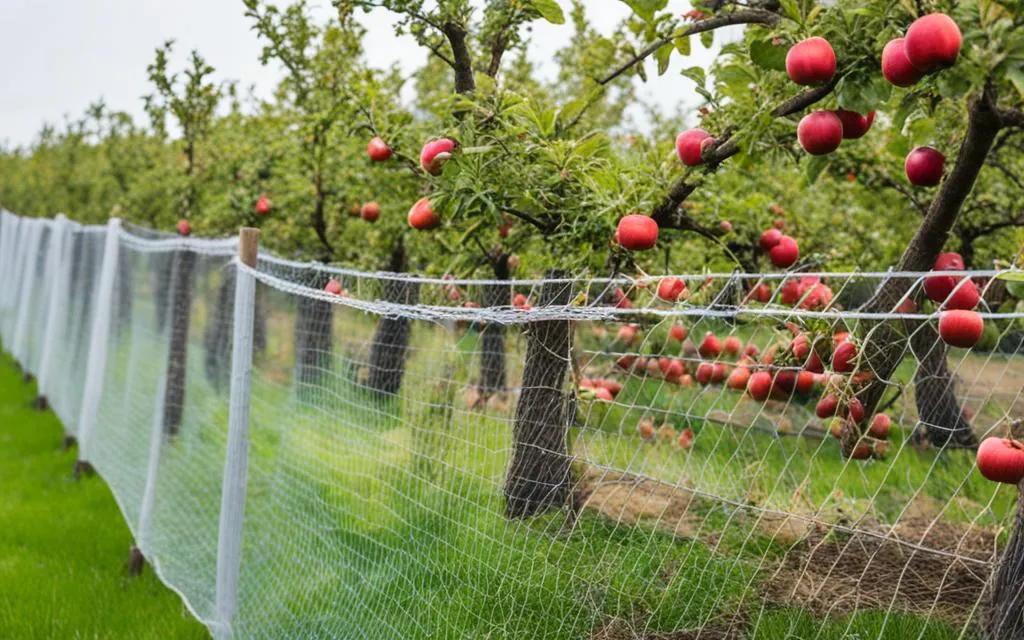
Focusing on deer isn’t the only thing, though. You also need to look out for pests like roundheaded apple borers. They can seriously harm the trees by burrowing into them in June and July. To stop them, watch for signs and use special collars to protect your trees17.
By making a solid plan to protect your apple trees, you help them grow strong. This care sets them up for success, leading to a large harvest later on161817.
Maximizing Fruit Production
To grow more apples from our trees, we must prune them wisely. The right way to prune can help make the tree’s size and shape better. This lets the tree put more energy into making fruit instead of growing lots of leaves19. Careful pruning keeps the tree the right size and lets enough sun and air reach the fruit. This is key for the best fruit growth.
Pruning for Size Control
Pruning at the right time is key for apple trees. Winter pruning is best for getting lots of fruit19. Doing this keeps the tree open so sunlight can reach everywhere. It ensures there are enough leaves for each fruit to grow well, aiming for 70-130 leaves per fruit19.
To get even bigger, better apples, it’s good to cut away some branches on old trees19. Taking out dead or sick branches also keeps the tree healthy and fruitful19. When a branch is cut short, more branches might grow near that spot. This can help shape young trees to grow better19.
Spring pruning wakes the trees up and helps them get ready to make fruit19. A mix of winter and spring pruning makes a tree both lush and fruitful19.
Knowing how to prune apple trees right is crucial for a great garden or orchard19. The right cuts can lead to more fruit and keep the trees strong and healthy for years19.
Conclusion
Determining the best spacing for apple trees varies by type – dwarf, semi-dwarf, or standard-size. Dwarf apple trees should be 8 to 10 feet apart20. Semi-dwarf trees need 12 to 15 feet of space20. For standard-size apple trees, plant them 18 to 20 feet away from each other20. It’s not just the tree type but also the climate, soil, and your goals that matter. They help decide the right distance between trees.
Growers with limited space might consider high-density planting. This includes methods like cordon espalier or fruit tree hedges for closer planting. For example, columnar apple trees can be just 2 to 3 feet apart20. When using these methods, think about pollination, sunlight, and how tree roots will spread. This is key to having a successful and productive apple orchard202122.
Knowing how to plan a successful apple orchard is crucial. This includes understanding ideal apple tree spacing. With this information, growers can plan for a great harvest. By applying these tips to your planting scheme, you’ll be on your way to a successful and rewarding apple-growing project.
FAQ
What factors influence the ideal spacing for apple trees?
The perfect space for apple trees varies based on their type, the area’s weather, and what the grower wants. This includes if they prefer many trees closely together or few for a hedge.
How much space do dwarf apple trees require?
Dwarf apple trees need about 6 to 8 feet apart. This distance lets them get enough sun, air, and space for roots.
This is important for their healthy growth.
What about semi-dwarf apple trees?
Semi-dwarf apple trees should be 15 feet apart. This distance helps their canopy and roots to grow well, with no competition.
How much space do standard-size apple trees need?
Full-size apple trees need the most space. They should be at least 25 feet apart. This allows their large canopies and root systems enough room.
What are some high-density planting methods for apple trees?
Cordon espalier involves planting trees 18-24 inches apart. Horizontal espalier spaces them 4-5 feet apart. These methods let you plant more trees in less space.
How can fruit tree hedges be planted?
For fruit tree hedges, plant them 3 feet apart. This will create a thick wall that needs regular trimming to stay neat.
What is the single-hole planting technique for apple trees?
The single-hole technique puts 2 to 4 trees in a hole. This way, you can grow different apple types close together without needing to graft.
How should apple trees be spaced in rows?
Space apple trees in rows based on their future height. Add 3 to 5 feet between rows for walking. This lets the trees and people have enough room.
How can young apple trees be protected from wildlife?
New dwarf apple trees need guard from animals. Use tree guards, fences, or deer spray to keep them safe from browsing wildlife.
This protection is crucial for their survival.
What techniques can be used to maximize fruit production from apple trees?
To boost apple yield, prune your trees strategically. This keeps the tree focused on making fruit, not just growing big.
Source Links
- https://www.hgtv.com/outdoors/flowers-and-plants/fruit/how-far-apart-plant-apple-trees
- https://www.starkbros.com/growing-guide/how-to-grow/fruit-trees/apple-trees/location
- https://extension.umn.edu/fruit/growing-apples
- https://www.gardeningknowhow.com/edible/fruits/fegen/fruit-tree-spacing-in-gardens.htm
- https://www.cumminsnursery.com/learn-trees/fruit-tree-height-and-spacing
- https://www.starkbros.com/downloads/OrchardDensity.pdf
- https://www.wyldecenter.org/guide-to-planting-apple-trees-at-your-school-garden/
- https://content.ces.ncsu.edu/high-density-apple-orchard-management
- https://ag.umass.edu/home-lawn-garden/fact-sheets/apples-high-density-growing-system-for-home-garden
- https://www.groworganic.com/blogs/articles/high-density-planting-and-pruning-fruit-trees-for-the-home-orchard
- https://www.gardeningknowhow.com/edible/fruits/fegen/fruit-tree-hedge-spacing.htm
- https://gardenerspath.com/plants/fruit-trees/fruit-tree-spacing/
- https://www.ediblebackyard.co.nz/how-to-space-your-fruit-trees/
- https://fullcyclepermaculture.com.au/planting-multiple-trees-in-one-hole/
- https://www.fourwindsgrowers.com/a/blog/fruit-tree-spacing
- https://www.almanac.com/plant/apples
- https://www.mofga.org/resources/apples/how-to-grow-apple-trees/
- https://www.plantmegreen.com/pages/apple-tree-guide
- https://mcculloughtreeservice.com/tree-trimming/apple-tree-pruning/
- https://www.theseasonalhomestead.com/what-you-need-to-know-before-you-plant-apple-trees/
- https://homegrownoutlet.com/apples/
- https://forestry.com/wp/guides/how-far-apart-to-plant-apple-trees-maximizing-your-harvest/


